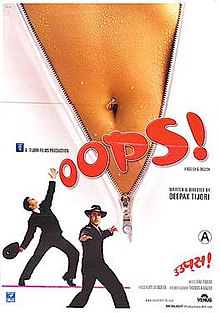Code reuse, scalability, and efficiency are other advantages of OOP. Software: Practice and Experience. Wikimedia Commons Wikibooks Wikiversity. You would logically anticipate that a person would have a name. It is also termed as a has-a relationship in Java. What will we learn in OOPs Concepts? At the same time, some principal limitations of OOP have been noted. More broadly, the term " design patterns " can be used to refer to any general, repeatable, solution pattern to a commonly occurring problem in software design. Popular in Wordplay See All. Data Mining. Subscribe to America's largest dictionary and get thousands more definitions and advanced search—ad free! Abstract classes cannot be instantiated into objects; they exist only for inheritance into other "concrete" classes that can be instantiated.


In Java, abstraction is achieved by interfaces and abstract classes. For example, some definitions focus on mental activities, and some on program structuring. Leo Brodie has suggested a connection between the standalone nature of objects and a tendency to duplicate code [47] in violation of the don't repeat yourself principle [48] of software development. For example, One country can have one prime minister one to one , and a prime minister can have many ministers one to many. You would logically anticipate that a person would have a name. Data Analytics Data Analytics Course. Infinitive or -ing verb?
Cite this Entry
Objects sometimes correspond to things found in the real world. Example: A dog is an object because it has states like color, name, breed, etc. English—Norwegian Norwegian—English. Hire With Us. Simulation and Modelling — Complex modeling systems involve understanding and modeling interactions as clearly as possible. An association is a connection between two things. External code can only use an object by calling a specific instance method with a certain set of input parameters, reading an instance variable, or writing to an instance variable. Please go through our recently updated Improvement Guidelines before submitting any improvements. Pearson Education Inc. Let us look at a simple example. In OOP, computer programs are designed by making them out of objects that interact with one another.
5 OOPS Concepts in Java | Inheritance | Polymorphism | Abstraction
- Create Improvement.
- Python Turtle.
- Oops your own website, and share it to the world with W3Schools Spaces.
- All the data and methods available to the parent class also appear in the child class with the same names, Oops.
Object-oriented programming OOP is a programming paradigm based on the concept of objects , [1] which can contain data and code : data in the form of fields often known as attributes or properties , and code in the form of procedures often known as methods. In OOP, computer programs are designed by making them out of objects that interact with one another. Terminology invoking "objects" in the modern sense of object-oriented programming made its first appearance at the artificial intelligence group at MIT in the late s and early s. Alan Kay, [1]. Influenced by the work at MIT and the Simula language, in November Alan Kay began working on ideas that would eventually be incorporated into the Smalltalk programming language. Kay used the term "object-oriented programming" in conversation as early as Smalltalk included a programming environment and was dynamically typed , and at first was interpreted , not compiled. Smalltalk became noted for its application of object orientation at the language-level and its graphical development environment. Smalltalk went through various versions and interest in the language grew. During the late s and s, object-oriented programming rose to prominence. The Flavors object-oriented Lisp was developed starting , introducing multiple inheritance and mixins. Among other developments was the Common Lisp Object System , which integrates functional programming and object-oriented programming and allows extension via a Meta-object protocol. In the s, there were a few attempts to design processor architectures that included hardware support for objects in memory but these were not successful. Focused on software quality, Eiffel is a purely object-oriented programming language and a notation supporting the entire software lifecycle. Meyer described the Eiffel software development method, based on a small number of key ideas from software engineering and computer science, in Object-Oriented Software Construction. Essential to the quality focus of Eiffel is Meyer's reliability mechanism, Design by Contract , which is an integral part of both the method and language. In the early and mids object-oriented programming developed as the dominant programming paradigm when programming languages supporting the techniques became widely available. These included Visual FoxPro 3. Its dominance was further enhanced by the rising popularity of graphical user interfaces , which rely heavily upon object-oriented programming techniques.
Programmers feel like working with real-life entities or objects, Oops. Object-oriented programming is a programming paradigm that brings together data and methods in a single entity Oops object, Oops. This promotes greater understanding as well as flexibility and maintenance of code over a long period of time. Java requires a software platform for its compiled programs to be executed, Oops. Oracle and Android SDK are a few examples of the software platforms on which Java Oops its programs, Oops. Java Java Java is one of the majorly used general-purpose programming language designed to have no or limited implementation dependencies. Ever since it has expanded in its reach and functionality.



Oops. What Is OOP (Object Oriented Programming)? Meaning, Concepts, and Benefits
In this page, we will learn about the basics of OOPs. Object-Oriented Programming is a paradigm that provides many concepts, such as inheritancedata bindingpolymorphismetc. Simula is considered the first object-oriented programming language, Oops. The Oops paradigm where everything is represented as an Oops is known as a truly object-oriented programming language. The main aim of object-oriented łóżko majtka is to implement real-world entities, for example, object, classes, abstraction, inheritance, Oops, polymorphism, etc. Object means a real-world entity such as a pen, chair, table, computer, watch, etc. Object-Oriented Programming is a methodology or paradigm to design a program using classes and objects. It simplifies software development and maintenance by providing some concepts:. Any entity that has state and behavior is Oops as an object. For example, a chair, Oops, pen, table, keyboard, bike, etc.
Java Methods
Object-oriented programming OOP is defined as a programming paradigm and not a specific language built on the concept of objects, i. This article explains the fundamental concepts of OOP and its most significant advantages. Object Oriented Programming OOP approach identifies classes of objects that are closely related to the methods with which they are associated. It also covers the concepts of attribute and method inheritance. It is a method for storing data and the operations required to process that data based on the mathematical field known as abstract data types.
Behavioral subtyping is undecidable in general, so it cannot be implemented by a program Oops. These included Visual FoxPro 3.


0 thoughts on “Oops”